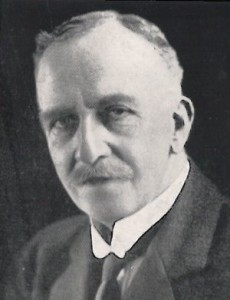Scharff, R. F.
Robert Francis Scharff (1856-1934) was born in Britain of German parents. He is best known as the director of the Natural History Museum in Dublin at the beginning of the 20th century. 
He was of the opinion that there had been a land bridge between Europe and America, which had also been home to Atlantis. Dr Scharff addressed the Royal Irish Academy on at least two occasions[539][540] on this subject. However, in 1899 he published The History of the European Fauna[1027] in which he made an even earlier reference to “the old landbridge between Europe and North America, which is generally known by the name of Atlantis.”(p.49)
>In a short paper(a) titled Some Remarks on the Atlantis Problem, delivered to the British Association in Belfast in 1902, Scharff reported “The results of my investigations tend to show that Madeira and the Azores are the remains of an ancient tertiary area of land which was joined to Europe, and that it probably became disconnected in Miocene times. Since then this land once more became united with our Continent, and may not have been finally severed until the Pleistocene period. As regards the question of a landbridge across the Atlantic, many reasons can be given in favour of such a theory. It must, however, have occupied a position farther south than the land just alluded to.” Although the idea of trans-Atlantic landbridges soon lost favour, the Azores and Madeira are still advocated by some as the remnants of Atlantis.<
Scharff among others of his day was strongly opposed to the idea that extensive ice sheets had covered huge areas of Europe and North America during the last Ice Age.
In a later book, Distribution and Origin of Life in America [1159]+, he offered further faunal evidence in support of an Atlantean landbridge in the Atlantic and quotes Professor Heinrich Simroth (1851-1917), who posited a landbridge from Portugal to the West Indies (p.213).
In 1926, Lewis Spence wrote[259.56] of Scharff as having “contributed more valuable data to the literature of Atlantean research than any other living scientist.”
Theodor Arldt (1878-1960), a German geographer, expressed similar views in 1907 regarding an Atlantic land bridge but placed it in the Miocene Epoch millions of years ago.
[1027]+ http://www.forgottenbooks.com/readbook/The_History_of_the_European_Fauna_1000205601#3
[1159]+ http://www.forgottenbooks.com/readbook/Distribution_and_Origin_of_Life_in_America_1000137980
(a) [PDF] V.—Some Remarks on the Atlantis Problem. | Semantic Scholar *
